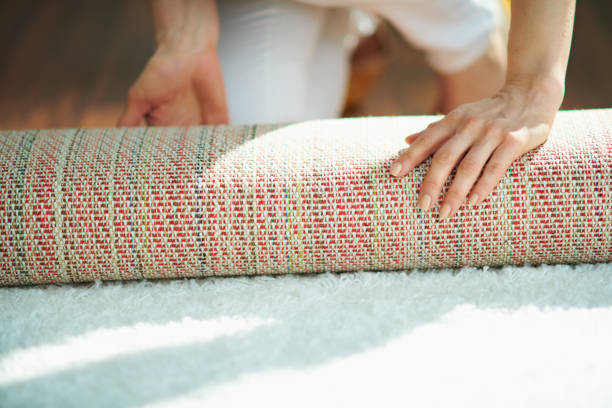There are many options when it comes to choosing an area rug. You can choose from various colors, materials, textures, and piles. One consideration is more important than all others: How will this area rug look in my living room?
Getting out the tape measure is not enough to answer this question. You must consider where the rug will be placed, other furniture, and the room’s overall design.
These four tips will help you determine the size of your living space and how an area rug can be placed in it.
Place the area rug underneath the furniture
This is the most important tip. To ensure that your area rug will fit in your living space, you must provide your furniture legs on the carpet. Don’t put some furniture in and some out, or place the rug just in front of each piece.
The first thing to do is place all furniture along the edge of your rug. This will prevent two of the rug hazards, namely tripping and sliding. The carpet will likely slide if left on the middle floor without anchoring. Even with a rug slip guard, it could still slide as someone steps on it. This can cause the person to fall. It could also happen the other way around: someone’s foot could catch on the edge of the carpet and cause them to trip.
It’s your choice how many legs or items you want to place on the rug once the furniture has secured it. If you have a small carpet or if your living room is smaller, putting only the front legs of the mat will suffice. Consider getting a rug to cover the entire floor of a large living room, particularly if it has hardwood or concrete flooring. This creates a lovely vignette to define the living room of a large floor plan.
The area rug should be wider than the furniture
It doesn’t matter how large your living room is; you should always have your rug extend past the edge of every piece of furniture. This tip has no safety or health implications, but it will look bad if the carpet is under the couch’s edges or straddled by two chairs on either side.
The area rug in your living room should extend six inches beyond the furniture. You will not pay a fine if you grow your carpet by only five and three-quarters inches. However, without this extra length, the room may feel cramped. A larger rug can make a space feel bigger.
If your rug does not extend past the furniture’s edges or peeks out, it will make your living room look unorganized and like you purchased the wrong rug size. It is easy to avoid this problem by measuring your living room and the furniture. It’s easier to order custom-sized rugs.
Avoid placing the rug too close to a wall
It’s time to apply the old saying “all things moderately” and ensure your area rug is large enough. If you choose a too-small carpet, it will look crowded and sloppy.
Ensure your rug is at least 8″ from the wall to avoid going too large. This gap creates an open border between the rug, and the wall. It gives the impression of more space in the living room. If you have a small room, can help the room appear larger by expanding this border up to 18″.
In a large, open-plan home, it is possible that the space you designate for the living room does not have any walls. If this is the case, ensure that the rug extends at least six inches beyond the edge of the furniture. It would be best if you still considered how far away the carpet is from a wall. Place the edge of your rug parallel to a wall, with a minimum 4′ distance between them. This will create a natural hall.
Rug styles for different-sized rooms
Everyone wants what they do not have. People with small living rooms wish they were more extensive, and people with large living rooms want to make them feel smaller. There are several ways to use an area rug in your living room to achieve your design goals.
Keep area rugs that have busy patterns away from small living rooms. Even simple designs create an illusion of chaos, making the room appear smaller. Dark area rugs will shrink your living room, much like dark walls can. Choose a solid-colored area rug in a neutral shade.
A large living room will feel smaller with an area rug that has a pattern. Your area rug will help prevent your room from feeling empty, ample space by filling it with a design. You can also experiment with bright colors. For instance, an area rug in indigo with a diamond-patterned can create a clear distinction between the living room and other areas.

